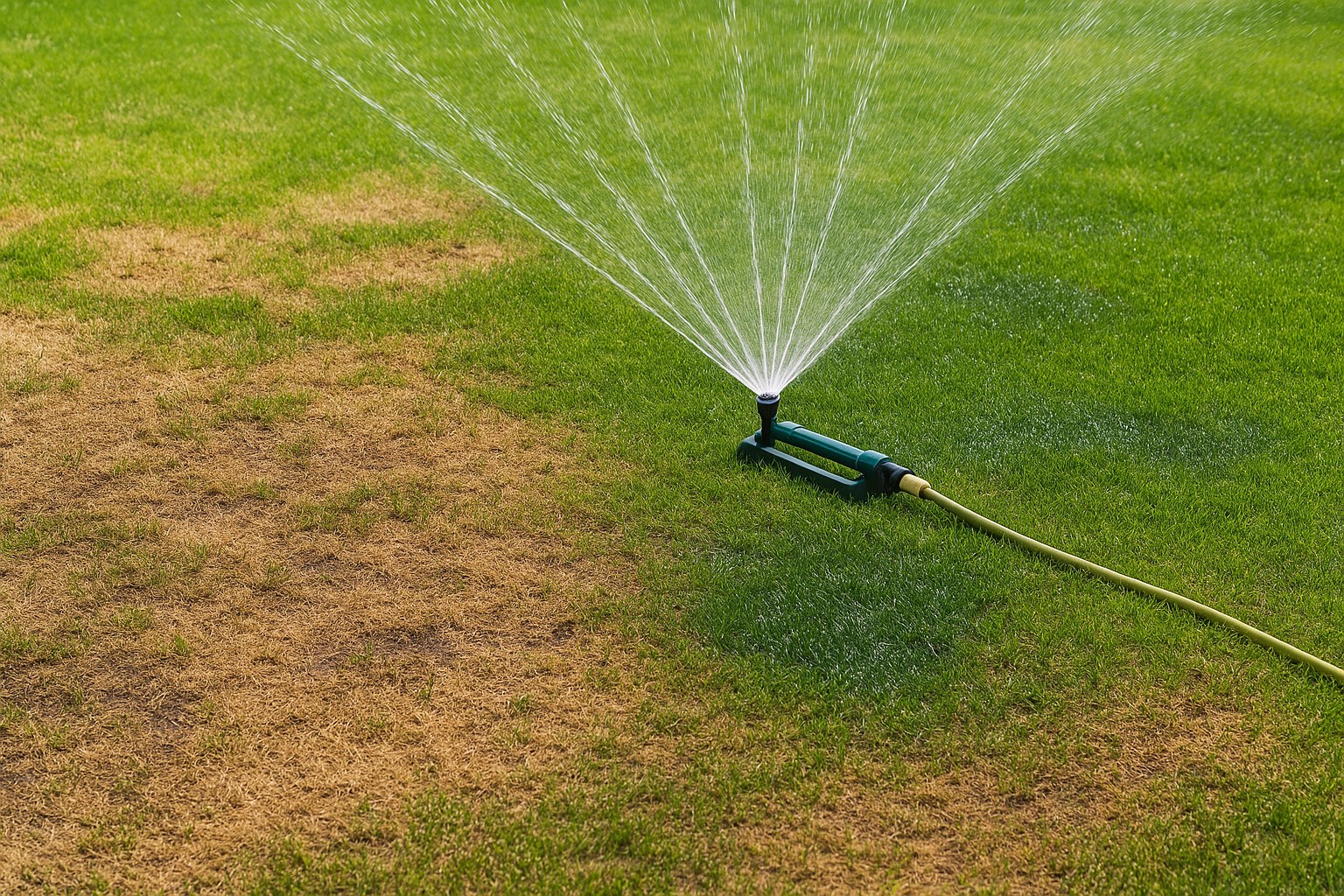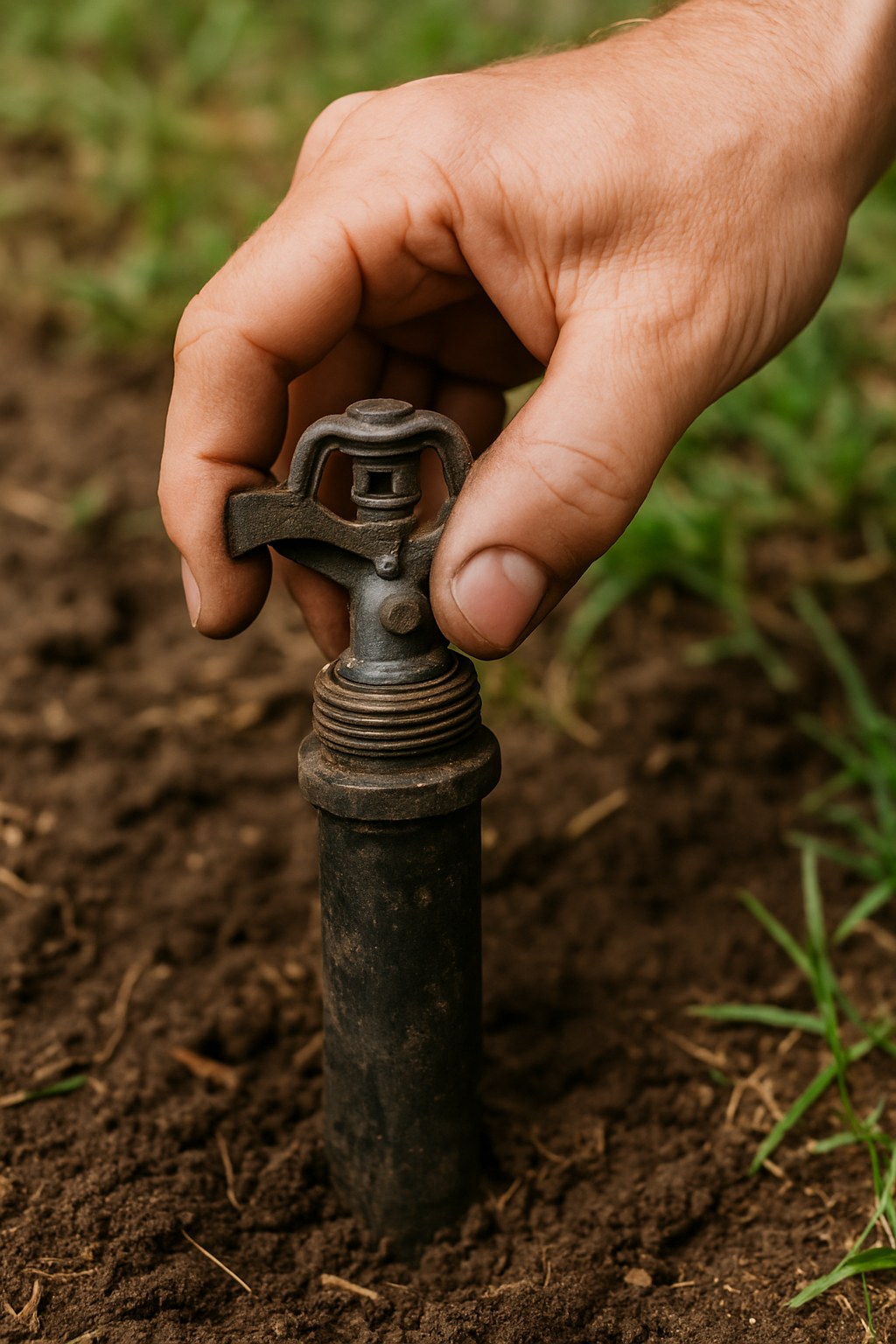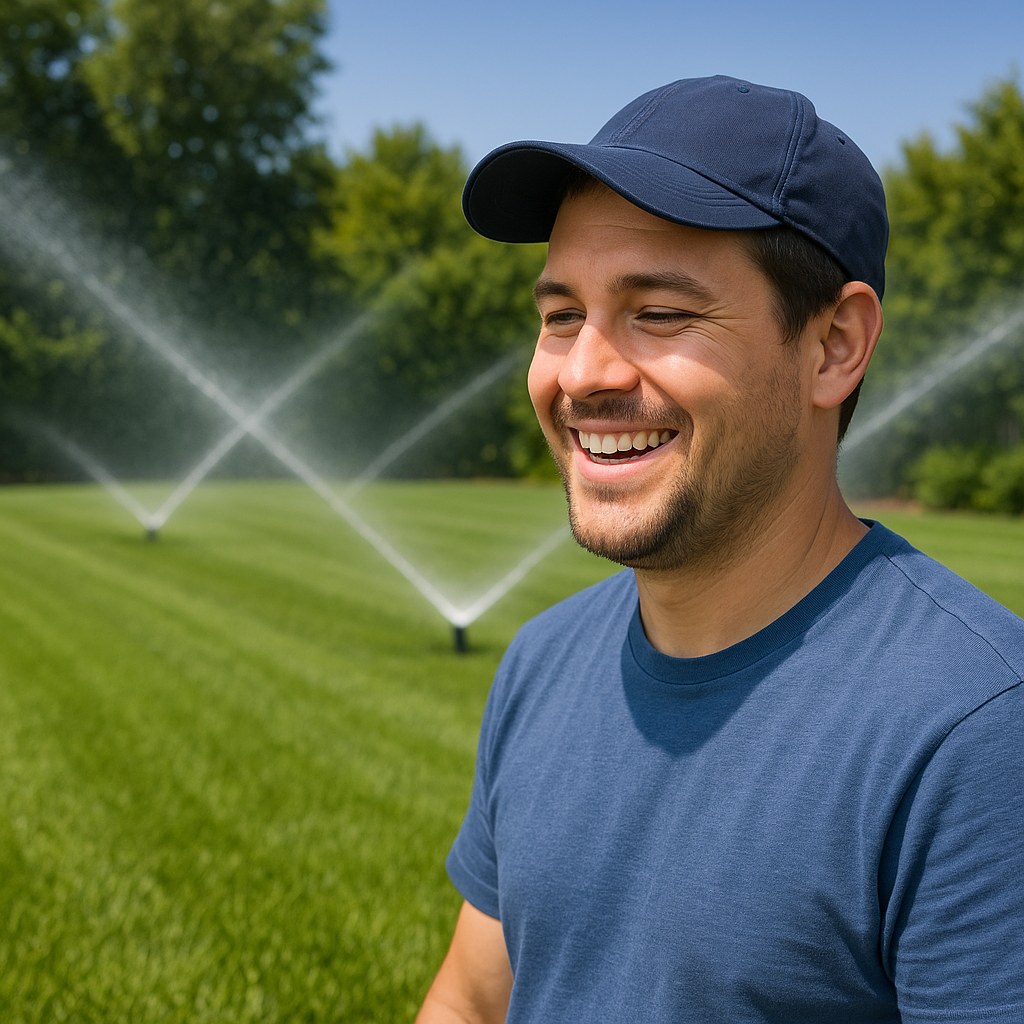There’s nothing more frustrating than putting in the effort to maintain your lawn, only to see patchy brown spots next to soggy, overwatered areas. If this sounds familiar, the culprit is likely your sprinkler system. When sprinkler heads spray unevenly, they not only create an eyesore but also waste a significant amount of water and money, all while putting your lawn’s health at risk.
The good news is that you don’t have to live with a checkerboard lawn. Most causes of uneven sprinkler spray are surprisingly easy to fix yourself with just a few simple tools and a little bit of time. Whether it's a clogged nozzle, a misaligned head, or a pressure issue, we’re here to walk you through it.
Think of me as your friendly expert on the other end of the line. In this guide, we’ll go step-by-step through the process of diagnosing and fixing your sprinkler system, turning you into a lawn care hero.

Why Are My Sprinklers Watering Unevenly?
Before we dig in (literally!), let's quickly cover the usual suspects. Understanding the root cause will make the fix much easier. Here are the most common reasons for uneven spray patterns:
- Mismatched Sprinkler Heads: Different types of heads (rotors, pop-ups, fixed sprays) release water at different rates. Mixing them in the same zone is a recipe for uneven coverage.
- Misaligned Heads or Incorrect Arc Settings: A sprinkler head might be tilted, sunken, or simply pointing in the wrong direction, sending water onto your driveway instead of your grass.
- Clogged Nozzles: Dirt, grass clippings, or mineral deposits can easily clog the small nozzle, causing it to sputter, stream, or spray in a weird pattern.
- Inconsistent Water Pressure: Low or fluctuating water pressure can prevent heads from popping up fully or spraying their intended distance, especially those furthest from the valve.
Now that you know what we’re looking for, let’s get your system back in top shape.
A Step-by-Step Guide to Fixing Uneven Sprinklers
Step 1: Perform an Initial Inspection
First things first, you need to see the problem in action. You can’t diagnose what you can’t see, so let’s get that water flowing.
- Start the Zone: Head over to your irrigation controller (usually in the garage or on an exterior wall). Manually start the specific zone that’s giving you trouble.
- Walk and Watch: With the sprinklers running, take a slow walk through the zone. Pay close attention to each sprinkler head. How is it spraying? Is it popping up all the way? Is the spray pattern a fine mist or a weak stream?
- Identify the Head Types: Look closely at each head. Do you see a mix of different types? For example, are there some heads that pop up and spray in a fixed fan pattern, while others rotate to cover a large arc? Jot down what you see. The most common types are pop-up spray heads, rotors, and impact sprinklers.
- Shut It Down: Once you’ve made your observations, press the "stop" or "off" button on your controller.
The most critical question you need to answer from this inspection is: Are different types of sprinkler heads mixed within this zone? If the answer is yes, you've likely found your primary problem.
Step 2: Fix Mismatched Sprinkler Heads
Imagine trying to fill a bucket with a fire hose and another with a garden hose—they’re going to fill up at vastly different rates. The same principle applies to your sprinklers. Different head types have different "precipitation rates" (how much water they put out over time). Mixing them guarantees that one part of your lawn will be soaked before another part is even damp.
The solution is to standardize all the heads in a single zone so they match.
- Mark the Mismatched Heads: With the system off, walk the zone again and place a small flag or a piece of colored tape next to every sprinkler head that doesn't match the majority.
- Purchase Replacements: Count the marked heads. You’ll need to buy that many replacements. For most residential lawns, simple pop-up spray heads are the standard. Take one of the old heads with you to your local hardware or irrigation supply store to ensure you get the right size and thread type.
- Replace the Heads: This is easier than it sounds!
- Turn off the water: Find your main irrigation shut-off valve and turn it off to prevent a geyser in your yard.
- Dig around the head: Use a small shovel or trowel to carefully dig a 6-inch circle around the head you want to replace. Dig down until you expose the vertical pipe it’s attached to, called the riser.
- Unscrew the old head: Grasp the old sprinkler head firmly and twist it counter-clockwise. It should unscrew from the riser.
- Screw on the new head: Take your new, matching sprinkler head and screw it onto the riser hand-tight.
- Backfill the soil: Push the soil back into the hole around the new head. Make sure the top of the head is level with the ground.
- Repeat: Do this for every mismatched head you marked.
- Test Your Work: Turn the main water supply back on and run the zone from your controller. Watch as the new, uniform heads provide a much more even spray.

Step 3: Adjust and Clean Individual Sprinkler Heads
If all your heads match but you still see uneven coverage, it’s time to look at individual culprits. The issue could be a simple alignment problem or a clog.
How to Adjust Sprinkler Head Alignment and Arc
If a sprinkler is spraying the sidewalk, hitting the fence, or missing a corner of your lawn, it needs a quick adjustment.
- Locate the Offender: Run the zone for a few seconds to see which head is misaligned, then shut the water off.
- Adjust the Direction: For most pop-up heads, you can simply pull up the stem and rotate it by hand to point it in the right direction. It should point toward the area you want to water.
- Adjust the Arc (Spray Pattern): Many nozzles have an adjustment screw on top. Using a small flathead screwdriver, you can change the watering arc.
- Turn the screw clockwise to decrease the arc (e.g., from 180° down to 90°).
- Turn it counter-clockwise to increase it.
- Test Again: Run the zone one more time to make sure your adjustments are perfect.
How to Clean a Clogged Sprinkler Nozzle
A clogged nozzle is one of the most common sprinkler problems. The spray might look weak, blocked, or just sputter out.
- Turn Off the Water: Make sure the system is off.
- Access the Nozzle: Pull up the sprinkler stem. You may need to use adjustable pliers to hold the stem up while you work.
- Unscrew the Nozzle: Twist the nozzle counter-clockwise to remove it from the stem.
- Soak and Scrub:
- Mix equal parts white vinegar and water in a small cup.
- Submerge the nozzle and let it soak for about 15 minutes. This will dissolve any mineral buildup.
- Use an old toothbrush to scrub away any visible dirt.
- For stubborn clogs, carefully push a straightened paper clip through the nozzle holes to clear them out.
- Flush the Line: Before reinstalling the nozzle, run the sprinkler zone for just a few seconds. This will flush any debris out of the line so it doesn’t immediately re-clog your clean nozzle.
- Reassemble: Screw the clean nozzle back on, release the stem, and you’re done!
Step 4: Diagnose and Adjust Water Pressure
If several heads in a zone (especially those at the end of the line) are struggling to pop up or have a weak spray, you might have a water pressure issue.
- Find Your Zone Control Valve: Look for a green, in-ground box somewhere in your yard. Inside, you’ll find several valves, one for each zone.
- Locate the Flow Control: Many of these valves have a small screw or handle on top for flow control.
- Adjust the Flow: Using a flathead screwdriver, try adjusting this screw. Often, these can be accidentally closed too much, restricting water flow.
- Turn the screw counter-clockwise one full turn to open it up more.
- Run the Zone and Observe: Turn the zone on again and see if the pressure has improved. You should see stronger, more consistent sprays from all heads.
If this doesn't solve the problem, you may have a larger issue, like a leak in the line or a problem at the main water supply, which may require a professional.
How Much Does It Cost to Fix Uneven Sprinklers?
One of the best parts about this home maintenance task is how affordable it is to do yourself.
- DIY Cost: A replacement pop-up sprinkler head typically costs between $3 and $15. Cleaning supplies like vinegar are things you likely already have. Your total DIY cost could be under $20.
- Professional Cost: Hiring an irrigation professional or landscaper is a great option if you're short on time or the problem is complex. According to HomeAdvisor, the typical cost for a professional sprinkler system repair ranges from $120 to $350, depending on the extent of the issue.
When to Call a Professional
While many sprinkler issues are perfect for a DIY weekend, some problems are best left to the experts. Call a professional if:
- You’ve tried all the steps above and the problem persists.
- You suspect an underground leak (look for unusually green or marshy spots).
- Multiple zones are experiencing low pressure.
- You need to replace a zone valve or repair the main line.

Your Lawn is a System—Keep it Healthy
Fixing uneven sprinkler heads is a huge step toward a healthier, more beautiful lawn. By ensuring every blade of grass gets the right amount of water, you’re not just saving money—you’re investing in your home’s curb appeal.
Feeling empowered? This is just one of the many home maintenance tasks you can conquer. For more expert guides, personalized maintenance reminders, and a direct line to trusted professionals for the jobs you can’t handle, download the Casa app today. Casa is designed to make homeownership easier, giving you the confidence to tackle any project, big or small. Get started and take control of your home maintenance


